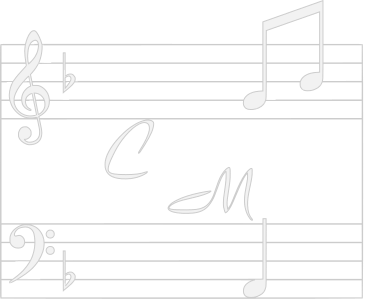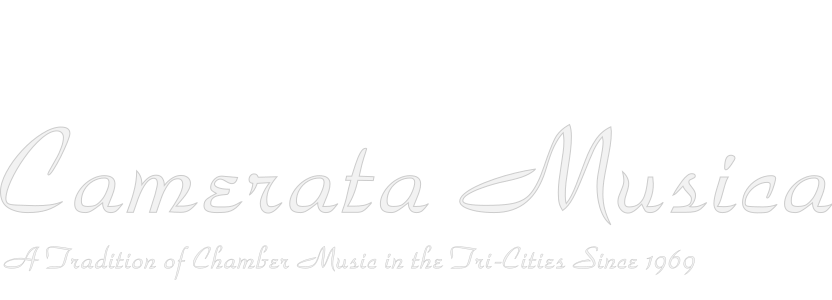Ensemble Caprice Members
Matthias Maute, recorder, traverso
Sophie Larivière, recorder, flute
John Lenti, baroque guitar
Lucie Ringuette, baroque violin
Anna Ogaka, baroque violin
Pemi Paull, baroque viola
Susie Napper, baroque cello
Photo credit: Gilles Brissette
Program
Antonio Vivaldi: The Four Nations
Ensemble Caprice embarks on a musical journey through England, Spain, France, and India with Vivaldi's Four Nations Concertos for recorders, guitar, and strings.
I
Marc-Antoine Charpentier (1643-1704): Sans frayeur dans ce bois, H. 467
Antonio Vivaldi (1678-1741): Concerto La Francia*, RV 821
II
Anonymous (18th century): Hungaricus 53
Antonio Vivaldi (1678-1741): Concerto Il Gran Mogul, RV 431a
III
Francesco Corbetta (ca. 1615-1681): Corrente
Antonio Vivaldi (1678-1741): Concerto for Strings, RV157
IV
Anonymous (17th century): The Duke of Norfolk
Antonio Vivaldi (1678-1741): Concerto L'Inghilterro*, RV 822
V
Matthias Maute (1963-): La Primavera (2018)
Marin Marais (1656-1728): Les Folies d'Espange
VI
Antonio Y Col Xacharas (18th century): Prelude
Antonio Vivaldi (1678-1741): Concerto La Spagna*, RV825
VII
Antonio Vivaldi (1678-1741): Postlude: Largo
*Reconstructed by Matthias Maute
About
Since it was founded by flautist Matthias Maute three decades ago, Ensemble Caprice has made its mark as one of the most sought-after ensembles on the classical music scene. Caprice has gained a solid reputation for its innovative programming and vibrant, compelling performances.
The musicians of Ensemble Caprice have traveled to the four corners of the globe, giving performances in dozens of countries on four continents. The Ensemble's tours have taken its members to Asia, China, Taiwan, Africa, Morocco, Tunisia and South Africa as well as several European Countries and the Americas. It has been the featured guest ensemble in many prestigious festivals, including the Lufthansa Festival of Baroque Music in London, festivals in Bruges (Belgium) and Utrecht (the Netherlands), the Felicia Blumental International Music Festival in Tel Aviv, and, in Germany, the Musikfestspiele Potsdam Sanssouci, the Early Music Days in Regensburg, the Händel-Festspiele in Halle, and the Stockstadt Festival. In the USA, the group has performed at New York City's Miller Theater and Frick Collection, the Boston Early Music Festival, and the Library of Congress in Washington D.C. In Canada, the Ensemble has been heard in Ottawa at the Music and Beyond Festival and the Ottawa Chamber Music Festival; it has performed at Early Music Vancouver, Early Music Voices in Calgary, the Edmonton Chamber Music Society, the Elora Festival and the International Festival Domaine Forget. This impressive roadmap bears witness to the fact that Caprice is recognised as being one of today's leading baroque ensembles. In 2009, the New York Times devoted a full article to the Ensemble, praising it as a progressive force on the contemporary musical scene.
Program Notes
Antonio Vivaldi's cycle of descriptive violin concertos "The Four Seasons" is some of the most famous music ever devised. It is therefore more than surprising that another cycle of four recorder concertos with descriptive titles by the same composer went completely unnoticed, even though the fact that most of the music is lost explains the lack of attention:
- Concerto La Francia (France)
- Concerto La Spagna (Spain)
- Concerto L'Inghilterro (England)
- Concerto Il Gran Mogol (India)
The Indian concerto highlights the reign of the Gran Mogul, however the music clearly stays within European boundaries, albeit with some interesting appogiatura figures that must have had enough exotic flavor for the composer to warrant the title.
The other three concertos come with some national features : The third movement of the English concerto, L’inghilterro, bears as titles "La tempesta di mare" and features a highly virtuosic depiction of a storm at sea, a normal sight on an island like England!
The Spanish concerto La Spagna surprises with a cadenza for recorder and violin that imitates the sounds of castagnettes. And the pizzicato passages in the third movement make us believe to listen to Spanish guitars in the streets of Madrid.
One might claim that the punctuated rhythms and ascending scales in the first movement of the Concerto La Francia allude to the overture in French style with exactly these features as prominent element. But since as opposed to the Four Seasons this newly reconstructed cycle is based on the more abstract idea of national representation, the listener will have to fill in some of the national colors with the own imagination.
Each concerto is preceded with a prelude composed in the country that the ensuing concerto is dedicated to.
It is a great pleasure to see how much Antonio Vivaldi is inspiring us today, 382 years after his untimely death.
Matthias Maute

